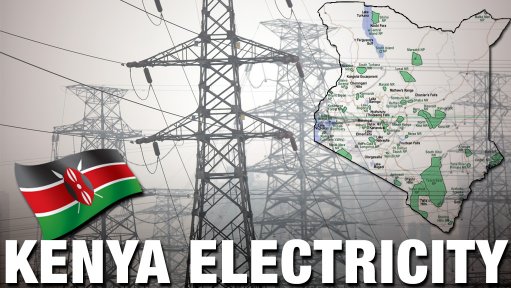
Kenya will in April embark on an ambitious project aimed at achieving univer- sal electricity connectivity by 2020.
Over 50% of the country’s citizens do not have access to electricity, as only 3.8-million households have been connected to the grid over the past century or so, translating into a 45% access rate.
“To sustain our development aspirations, we need to connect all Kenyans to the grid,” Kenya Power MD Dr Ben Chumo tells Engineering News in an exclusive interview.
He explains that the Last Mile Connectivity Project, which forms part of the Kenyan government’s Energy Access Scale-Up Programme, is designed to benefit low-income rural communities, which have the lowest electricity penetration rates in the country.
To achieve universal grid connectivity, Kenya requires $540-million, which, to a large extent, will be provided by the East African country’s develop-ment partners, the African Development Bank and the World Bank, which have committed $438.7-million to the project. While other potential funders are willing to come on board, the Kenyan government has opted to raise the balance.
The project, to be implemented in three phases, will see Kenyans living near 40 000 transformers spread across the country paying only $144.60 to be connected to the grid.
Under the first phase, which will cost $130-million, the company intends to connect about 314 000 households, providing access to the grid for an estimated 1.5-million Kenyans. Kenya Power has already contracted local firms to supply 480 000 poles, 315 000 switchboards and meters, as well as thousands of kilometres of cables that will be required during this phase, which will be implemented over 18 months. “We want to empower local small and medium-sized businesses by locking the purchase of all materials required for the project within the country,” says Chumo.
In the second and third phases, an additional 500 000 households will be connected to the grid, providing over 2.5-million Kenyans with access to electricity.
“Kenyans do not need to apply for connection; they just need to identify the transformer near to them and we will connect them,” explains Chumo.
To connect Kenyans living in informal settlements in the capital city, Nairobi, Kenya Power has partnered with the Wold Bank in an initiative called Global Partnership Output Based Aid. Under this initiative, people living in the densely populated slums pay a highly subsidised connection fee of $11. Some 500 000 households have already been connected to the national grid under the auspices of this initiative.
For the project to become a reality, Kenya has been forced to invest heavily in generation projects. In the current budget, a total of 532.2-million has been allocated to the power sector, with a huge chunk going into generation, particularly geothermal. The country’s total installed capacity stands at 2 211 MW, which it wants to increase to 5 000 MW by end of next year. Apart from geothermal, Kenya is also investing in wind, solar and coal projects.